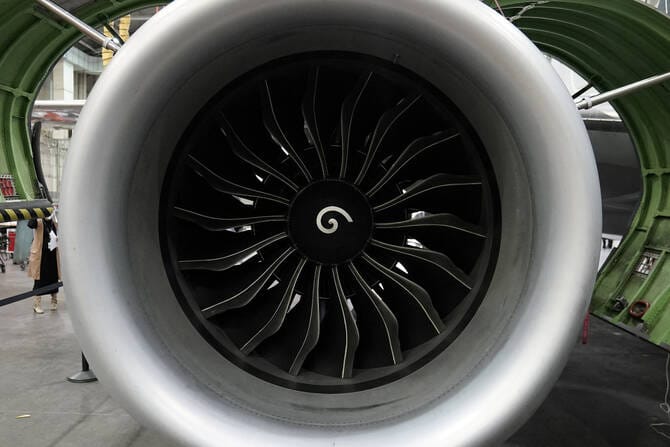The National Transportation Safety Board issued an urgent safety recommendation Wednesday to address the possibility of smoke entering the cockpit or cabin of Boeing 737 MAX airplanes equipped with CFM International LEAP-1B engines.
The NTSB also recommended evaluating the potential for the same issue with LEAP-1A and LEAP-1C engines, which are used on some Airbus A320neo variants and COMAC’s Chinese-made C919 jets.
The recommendation comes after two incidents involving Southwest Airlines Boeing 737 MAX jets that experienced bird strikes in 2023. The NTSB wants the Federal Aviation Administration to ensure that operators inform flight crews of airplanes equipped with the affected engines.
Southwest said it is reviewing the recommendations and that it has mitigation procedures currently in place. Southwest notified its flight crews about the effects of certain bird strikes following two events that occurred in 2023, reiterating the importance of following established safety procedures.
CFM, the world’s largest engine maker by units sold, is co-owned by GE Aerospace and Safran.
The NTSB said it was “critical to ensure that pilots who fly airplanes equipped with CFM International LEAP-1B engines are fully aware of the potential for smoke in the cockpit if the load reduction device is activated during a critical phase of flight (takeoff or landing).”
The FAA and Boeing both said they agreed with the NTSB recommendations, and the planemaker alerted operators that smoke could enter the flight deck following the activation of the Load Reduction Device (LRD) in the engines, as a result of a bird strike.
“We advised operators to evaluate their procedures and crew training to ensure they address this potential issue,” the FAA said. “When the engine manufacturer develops a permanent mitigation, we will require operators to implement it within an appropriate timeframe.”
Boeing said that CFM and Boeing “have been working on a software design update.” The NTSB wants the update to be required on all 737 MAX planes once completed.
GE, Airbus and COMAC did not immediately respond to requests for comment
The NTSB asked the European Union Aviation Safety Agency and the Civil Aviation Administration of China to determine if other variants of the CFM LEAP engine are also susceptible to smoke in the cabin or cockpit when an LRD activates. EASA did not immediately respond to requests for comment.
In November, the FAA said it would not require immediate action after convening a review board to consider concerns about Boeing 737 MAX engines after two bird strike incidents involving the CFM LEAP-1B.
The FAA had been considering recommendations for new takeoff procedures to close the airflow to one or both engines to address the potential impact of a bird strike and prevent smoke from entering the cockpit.
In 2024, the NTSB opened an investigation into the Southwest left engine bird strike and subsequent smoke in cockpit event that occurred near New Orleans in December 2023.
The other incident occurred in a Southwest March 2023 flight that had departed Havana and in which a bird strike led to smoke filling the passenger cabin.
In February 2024, Boeing published a bulletin to inform flight crews of potential flight deck and cabin effects associated with severe engine damage.
Read More

Russia slams US over strikes on boats from Venezuela
Russia on Tuesday denounced as illegal and “unacceptable” US strikes on boats from Venezuela — a Moscow ally — that Washington says are transporting drugs. “This is how, in general, lawless countries act, as well as those who consider themselves above the law,” Russian Foreign Minister Sergei Lavrov said in televised remarks,

Germany jails three Syrians who fought for ‘terror group’
A German court on Tuesday sentenced three Syrian men to prison for involvement in a foreign terrorist group during the civil war after a trial that lasted more than a year. The three defendants, identified only partially as Amer Tarak A., Sohail A. and Basel O., received sentences ranging from

France’s ex-leader Sarkozy says after jail release ‘truth will prevail’
France’s former president Nicolas Sarkozy vowed on Monday that the truth would win out after he was released from prison under judicial supervision ahead of an appeal trial over Libyan funding. Sarkozy, 70, earlier Monday left La Sante prison in Paris — a 20-day experience the former president called a

US Senate passes bill to end government shutdown, sends to House
The US Senate on Monday approved a compromise that would end the longest government shutdown in US history, breaking a weeks-long stalemate that has disrupted food benefits for millions, left hundreds of thousands of federal workers unpaid and snarled air traffic. The 60-40 vote passed with the support of nearly

